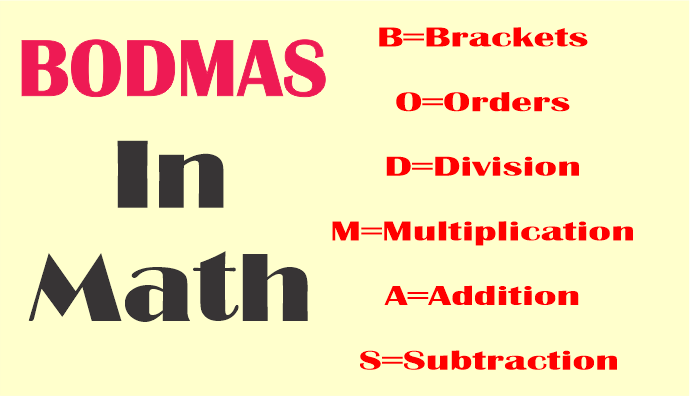"Let's Share, Sharing is Caring"
Mathematics is complicated subject that have specific rules to solve complex equations. BODMAS is one of the most important rules used to solve analytic algebraic expressions precisely. Here, we will discuss about BODMAS what is it, its significance, and accommodate various examples to allegorize its application. Additionally, we’ll discuss about several math’s brackets and how the BODMAS rule applies to them.

What is BODMAS?
BODMAS is an abbreviation that stands for Brackets, Orders, Division, Multiplication, Addition, and Subtraction. It represents the adjustment of operations that charge be followed back evaluating algebraic expressions. The purpose of BODMAS is to eliminate uncertainty in analytic expressions and ensure that every being got the same results when performing calculations.
What is the BODMAS Rule?
The BODMAS rule outlines the sequence of steps to be taken while simplifying a mathematical expression. It is crucial to follow this rule to avoid errors and obtain accurate results. The order of operations can be summarized as follows:
- Brackets: Start by solving expressions within parentheses, square brackets, and curly braces. Work from the innermost brackets and move outwards.
- Orders: Evaluate expressions with exponents or powers.
- Division and Multiplication: Perform division and multiplication operations from left to right.
- Addition and Subtraction: Finally, carry out addition and subtraction operations from left to right.
BODMAS Examples:
Example 1:
Simplify: 3 + 4 × 2
According to the BODMAS rule, we must first perform the multiplication, and then the addition. So,
3 + 4 × 2 = 3 + 8 = 11
Example 2:
Simplify: (6 – 2) × 5 ÷ 3
Following the BODMAS rule, we first solve the expression inside the parentheses, then perform the multiplication, and finally, the division:
(6 – 2) × 5 ÷ 3 = 4 × 5 ÷ 3 = 20 ÷ 3 ≈ 6.67
Example 3:
Simplify: 2² + √9 × (8 ÷ 4)
Using the BODMAS rule, we start with the exponentiation, then the square root, followed by division and multiplication:
2² + √9 × (8 ÷ 4) = 4 + 3 × 2 = 4 + 6 = 10
Types of Brackets in Math
To better understand and apply the BODMAS rule, it is crucial to know the different types of brackets used in mathematics. These include parentheses, square brackets, and curly braces. If you need a refresher on the types of brackets and their significance in mathematical expressions, check out this helpful article: Types of Brackets in Math.
Conclusion:
The BODMAS rule is a fundamental principle in mathematics that ensures consistency and accuracy when solving complex expressions. Understanding the order of operations and following the BODMAS rule will lead to precise results and facilitate problem-solving in various mathematical applications. By mastering BODMAS, you will have a solid foundation for tackling more advanced mathematical concepts and equations.
